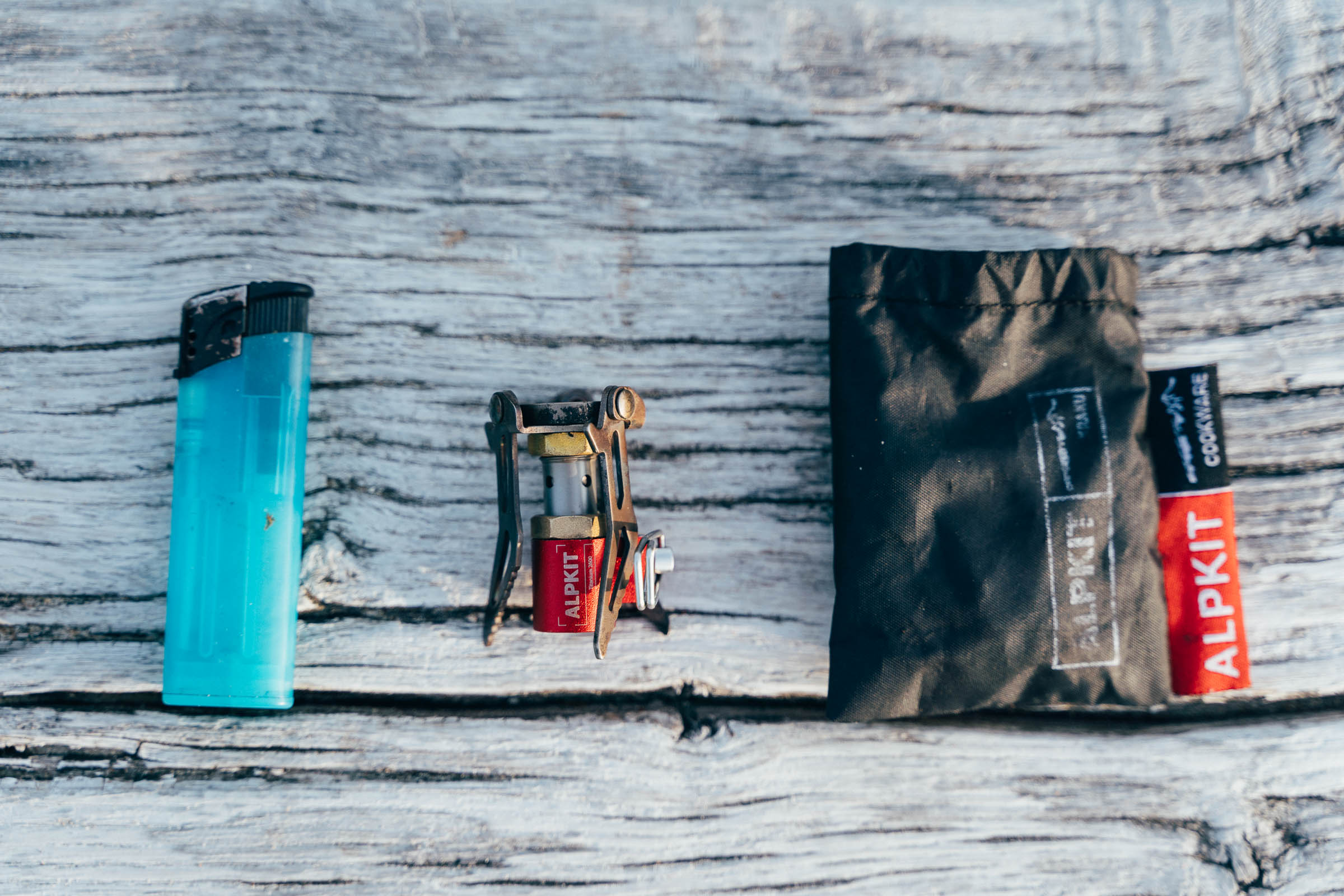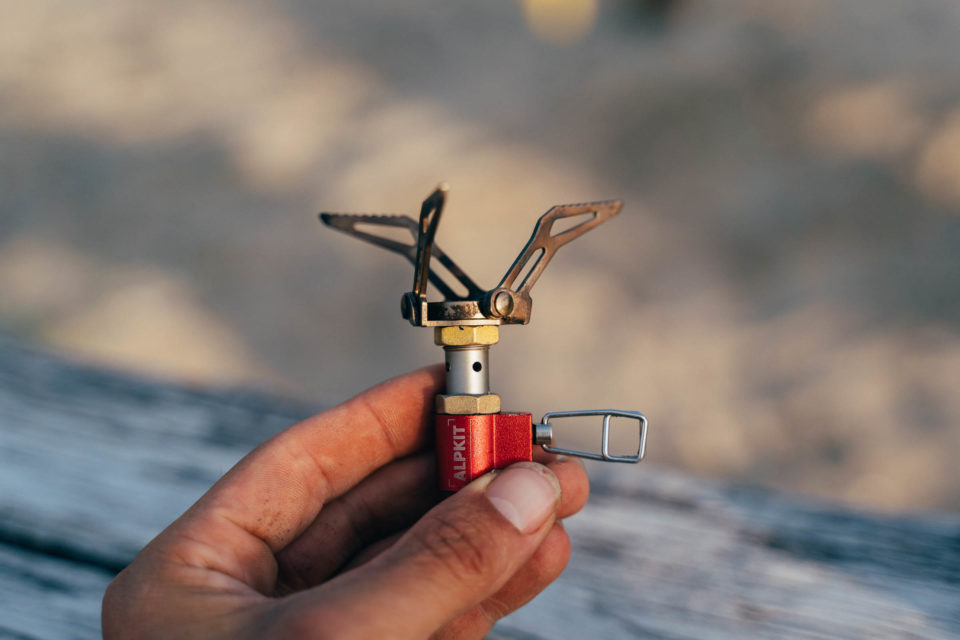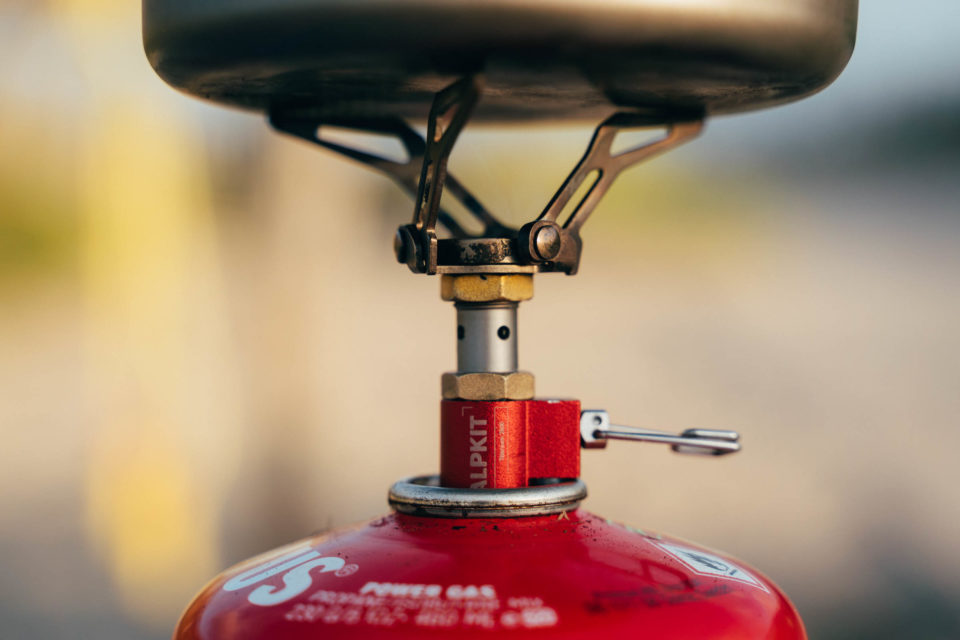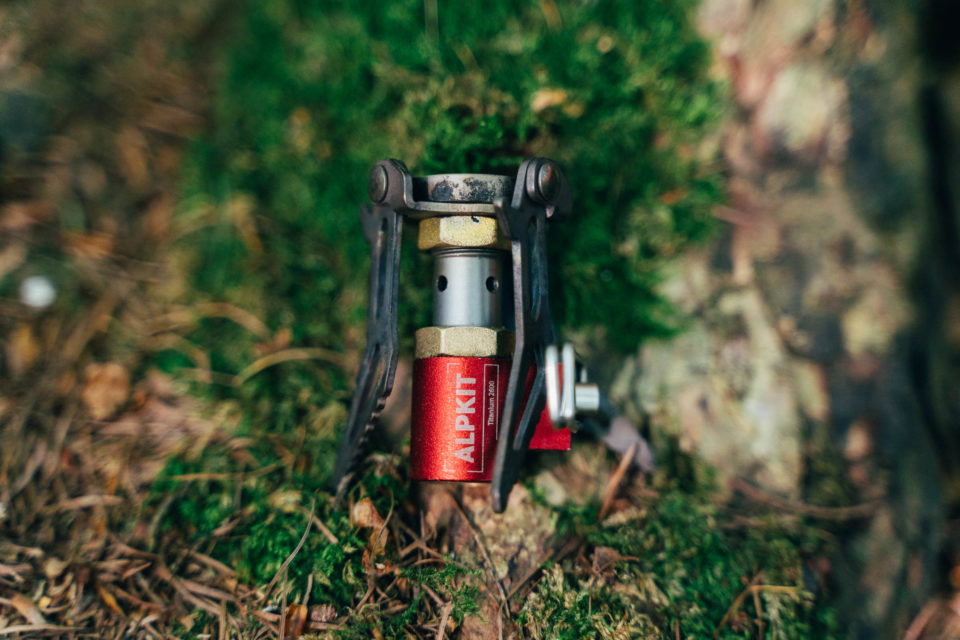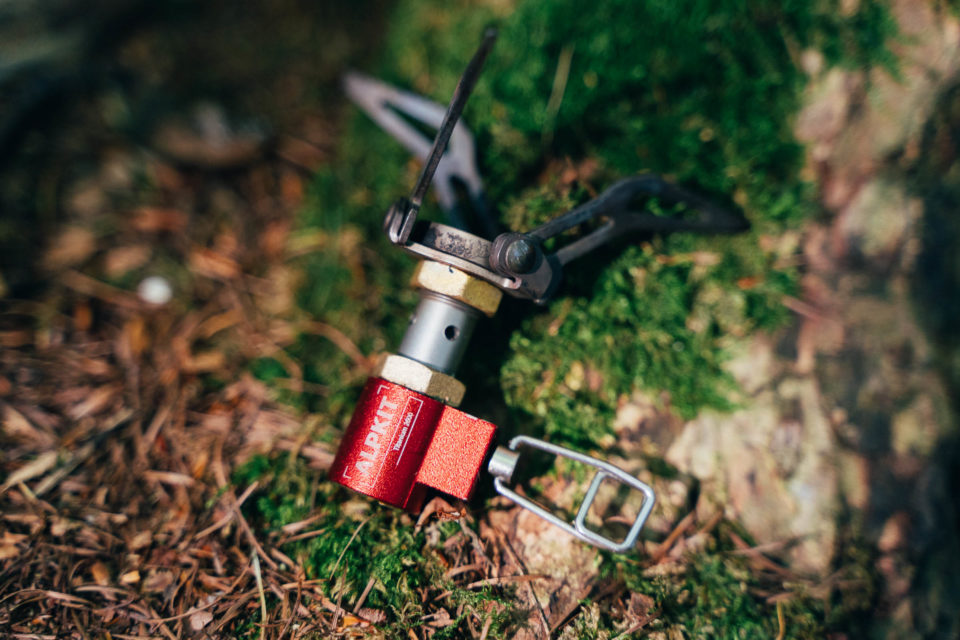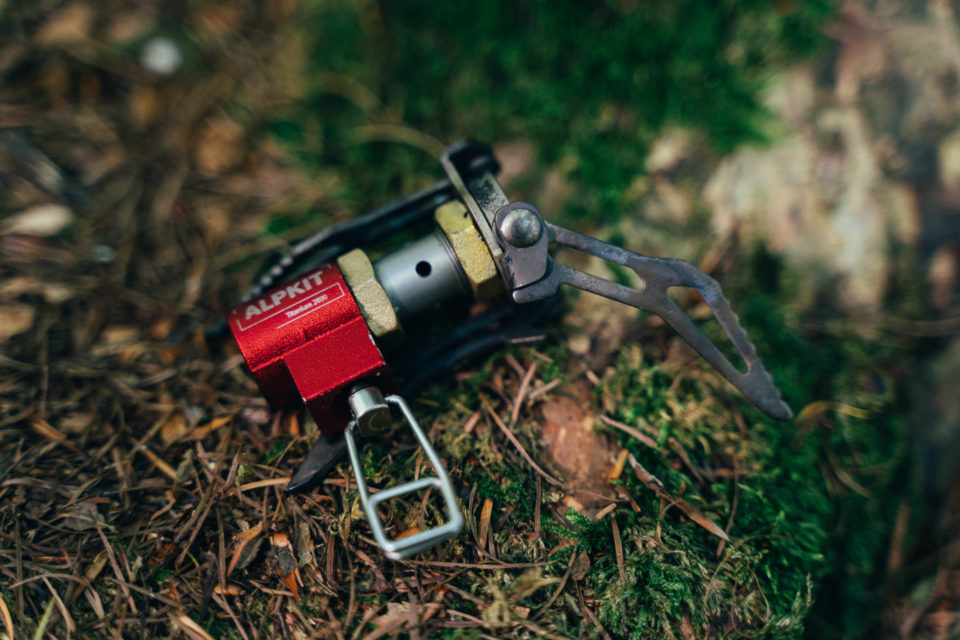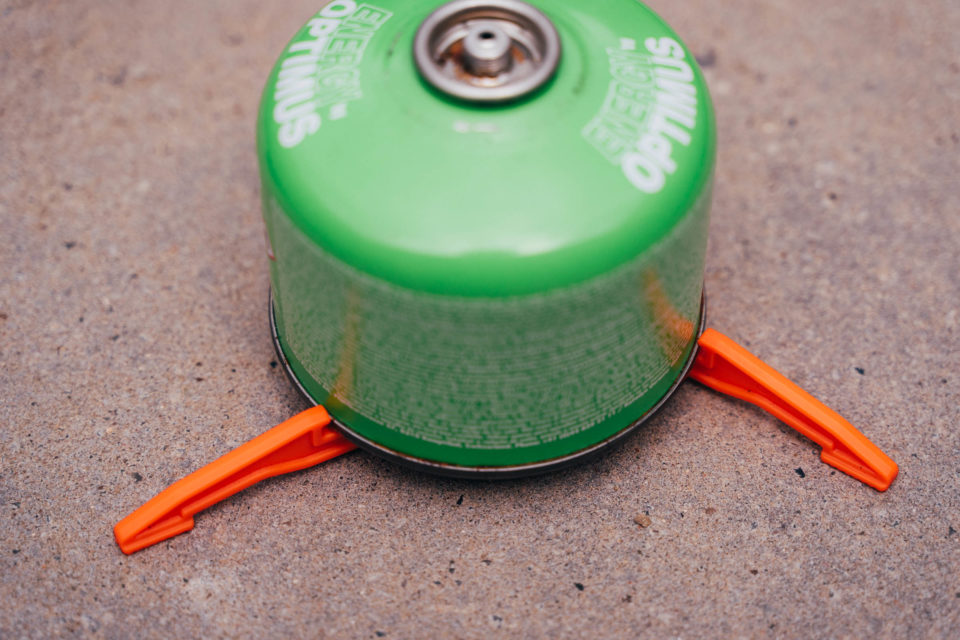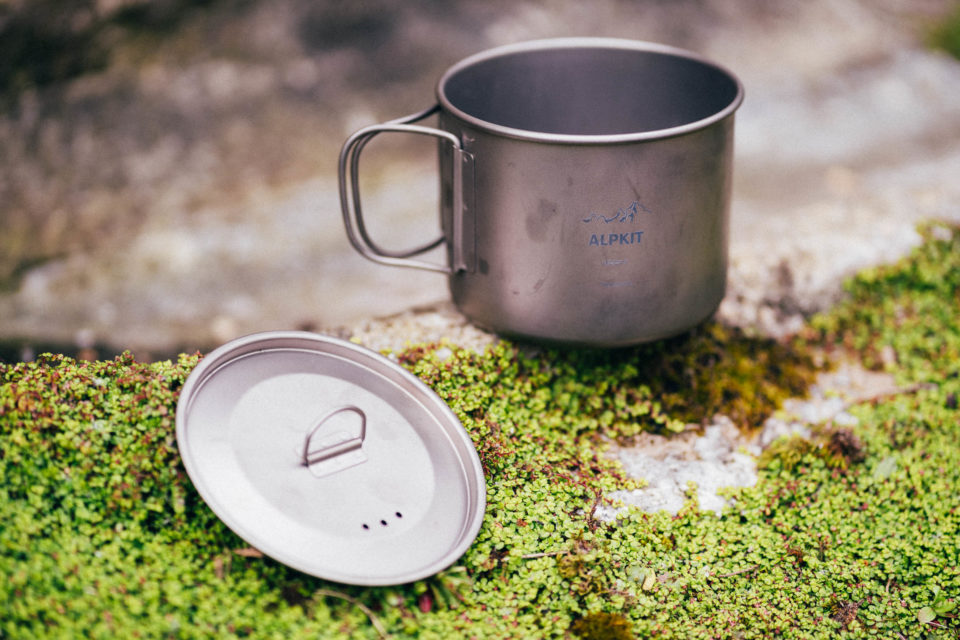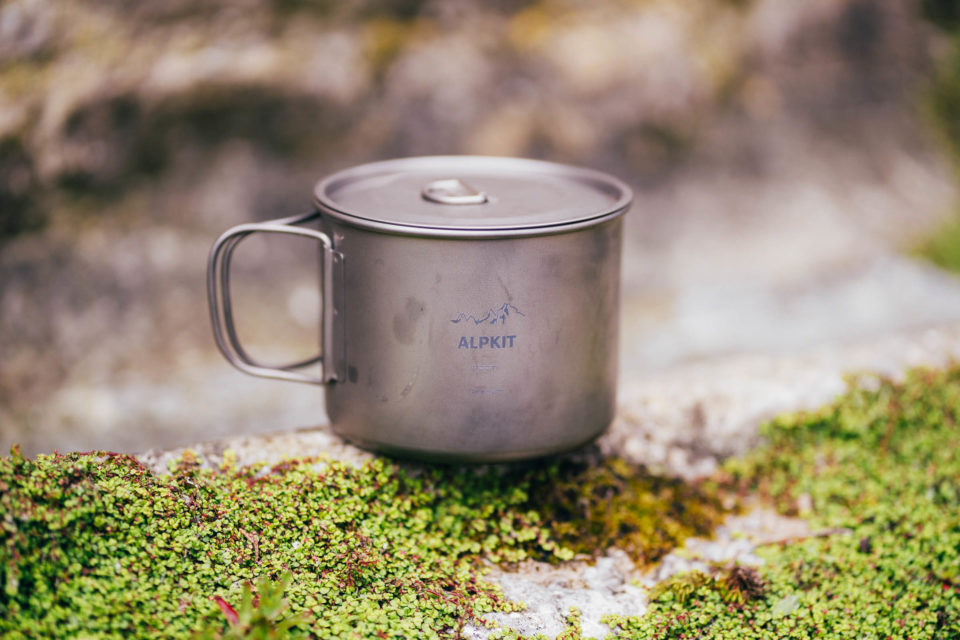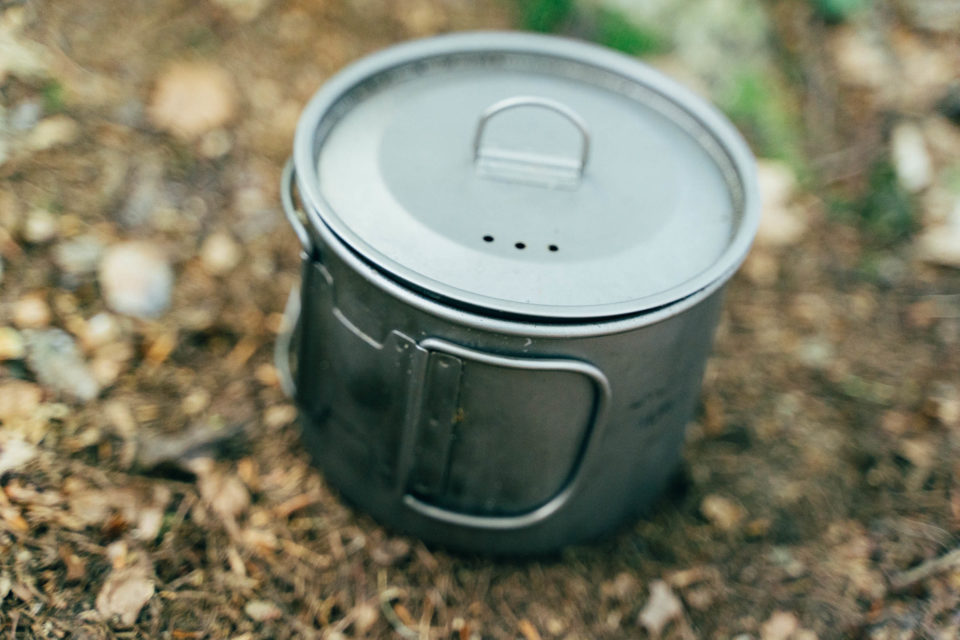Alpkit Kraku Stove + MytiPot 900 : Convenient Minimalism on a Budget
We try the Alpkit Kraku – an ultra-compact gas canister stove – and the 900ml MytiPot on tour in Europe. Who said minimalism can’t be affordable? Find our review here…
Given the waste they create and the lack of gas bottle availability in many parts of the world, I have to admit that I’m not the biggest fan of canister stoves. Hm… perhaps this isn’t the best way to start a review? Still, here I am using one because there are definitely times when the convenience – namely blazing speed, ease of use, efficiency, cleanliness, and very a compact form factor – comes into its own. Team a gas canister stove with a lightweight titanium pot and you have a minimal cooking system that, despite its limitations, offers a lot more potential than simply making a quick trail brew…
ALPKIT KRAKU
Alpkit considers the Kraku to be one of the lightest stoves on the market. On a digital kitchen scale, it weighed 43g – or 49g with the small bag that’s provided. This said, I couldn’t bring myself to buy a compact 100g gas canister for €5, when the bulkier 230g version costs just a euro more, so I don’t really qualify as the type of bikepacker who makes every gram count. But still, there’s no doubt that the Kraku can be part of a very lightweight cooking setup if that’s the way you roll. As a comparison, the larger (and bulkier) Pocket Rocket 2 weighs 70g.
In use, I found the Kraku blisteringly fast at bringing water to a rolling boil. It has a 2600W power output and makes quick work of making a morning coffee or, with its foldaway simmer control, more complex evening creations. I rustled up a Thai noodle soup with stir-fried vegetables almost as quickly as a street vendor in Bangkok. The flame is relatively small and concentrated in one spot, but let’s not forget that the stove – with its 85mm wingspan – is best used with smaller pots in the first place. Note that the simmer control is on the small side, so it’s best handled with care.

Folding away neatly into a teeny tiny package, its serrated, angled feet do a relatively good job at holding a small pot in place, though the addition of a canister support, like this one, would certainly help avoid a potential culinary Tower of Pisa disaster. It’s not wobbly per se, it just can’t match the stability of larger and heavier stoves, like the Pocket Rocket 2 or the Clikstand. As for other accessories, a windshield will improve efficiency, or at least tucking it behind a rock; as is, the flame is strong enough that you can get away using it in light winds, though you’ll definitely burn through more fuel if you’re in the open.
The Kraku is made from ti, brass, and aluminium. For the relatively modest sum of £27 (€29.70), I’d consider its build quality to be very good; Alpkit offers a three-year warranty, too. Looking around at comparable stoves, it has to be said that the design looks remarkably similar to the well regarded Fire Maple Hornet FMS-300T, popular in UL circles, which it undertakes comfortably in price – it’s likely been rebranded.
In a similar vein, those in search of internet bargains will probably have come across its Ali Express nemesis, an equally compact titanium stove that’s half the cost and weighs just over half the weight. As it happens, a friend brought one on a recent bikepacking trip so we were able to compare the two. In the hand, the lookalike certainly feels a lot lighter, even if the difference is relatively small, at just 20g. On closer inspection, the two stoves resemble each other but are far from being the same. Both appear to have comparable power output and flame regulation, but the heavier Kraku feels far more solid and a touch more stable too. Whether you choose to save some money and order direct from China, or pay a little more and go with a brand that has a robust guarantee, I’ll leave up to you.
See images below for the kind of support I’d recommend and a comparison with the Ali Express/BRS-3000T lookalike.
Pros
- Minuscule size
- Excellent power output
- Solid build quality
- Affordable
Cons
- Not as stable as larger stoves; small pots best
- Benefits from a wind shield or being tucked behind rocks if windy
- Waste produced from gas canister stoves; be sure to recycle properly
- MODEL NAME: Alpkit Kraku
- WEIGHT of STOVE: 43g
- FOLDED SIZE: 37 mm x height 52 mm
- OPEN SIZE: 85 mm x height 68.5 mm
- MINIMUM POT DIAMETER: 6.5 cm
- PRICE: £27 (€29.70)
- Place of Manufacture: China
- Manufacturer’s details: Alpkit
ALPKIT MYTIPOT 900
I paired the Kraku with a 900ml MytiPot, available from Alpkit for £35/€38.50. It’s an excellent mug that has stood the test of time; it’s robust enough that it hasn’t knocked out of shape and there’s no loosening of rivets to report. The lid includes drain holes for pasta (or gluten free gnocchi, a personal favourite), though I find careful lid-tipping offers a quicker solution. The MytiPot also available in a 400ml MytiMug version (great for coffee mug dangling, if that’s your style) and a 650ml in-betweener. As a point of reference, the 900ml pot fits in size L Porcelain Rocket framebag, without its width creating any pedal rub issues.
But as much as I love this mega mug, I’d point out that it’s just a touch too short internally (at 9.1cm) to nest a 230g Primus gas canister – the lid won’t quite close. It’s not a big deal, but it is a slightly annoying quirk. Given its size, which I’d consider generous for one or streamlined for two, it’s also a shame that there are no inside volume markings. This makes rehydrating pre-prepared food somewhat imprecise.
Pros
- Stoutly made
- Reasonable price
- 900ml is a good size for hungry solo riders who actually like to cook
Cons
- Doesn’t quite nest a 230g canister though designs may vary
- No inner volume markings
- MODEL NAME: Alpkit MyTiPot
- WEIGHT of STOVE: 120g (lid and pot)
- HEIGHT: 9.2cm
- EXTERNAL DIAMETER: 12.3cm
- INTERNAL DIAMETER: 11.5cm
- INTERNAL DEPTH: 9.1cm
- VOLUME:900ml
- PRICE: £35 (€38.50)
- Place of Manufacture: China
- Manufacturer’s details: Alp Kit
WRAP UP
Alpkit has earned itself a solid reputation in the UK for getting people out into the outdoors affordably: it makes no-nonsense products that generally do a very good job, without incurring the premium price we often associate with specialist camping gear. In this regard, the Kraku certainly fits neatly into Alpkit’s product line. If a gas canister stove works best for you, I have no hesitation in recommending it for general bikepacking use, outside of extreme conditions. I’ve used it throughout the summer on short overnighters, or just carried it to places where I wasn’t completely sure I’d end up needing to cook. And I’ve chatted to others who report no issues after more than a year of regular use on the shoulder seasons too.
Whilst it’s great to see an affordable, compact titanium potset readily available in the UK – budget ti has long been the domain of the US and overseas orders – I do think the lack of volume markers on the MytiPot 900 is a bit of a letdown. It doesn’t quite nest a 230g Primus canister either; not necessarily a big issue, but again, a minor irk. Perhaps I’m being overly fussy, because the lid almost closes and it’s not too hard to eyeball water levels when it comes down to it. In any case, I carry it with me on all my shorter trips these days, whatever stove I’m using.
Have you subjected the Kraku or MytiPot to long-term use? Please let us know what you think in the comments. Given that gas canisters can’t be refilled, find details on how to recycle them here.
Please keep the conversation civil, constructive, and inclusive, or your comment will be removed.






